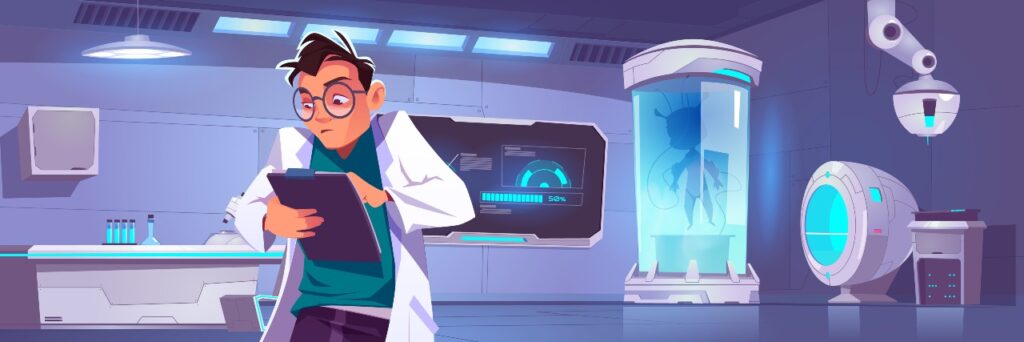They say that death is the final phase of a human’s life. However, science and technology have given people hope in restoring vitality and prolonging life. This is where the concept of cryonics comes in.
Cryonics involves the process of deep-freezing the body of a person who has recently passed away. The main purpose of this is to preserve the body indefinitely in hopes that in the future, science will be advanced enough to replace or repair vital tissues and bring a patient back to life.
The idea behind cryonics is not new at all. In fact, it has been in existence since the 1950s. This article will give an overview of the advances and pitfalls in cryonic preservation over the last 70 years, and the technology behind this.
Cryonics Timeline
The beginnings of cryonics can be traced back all the way back to the 1940s when Jean Rostand, a French biologist, studied how extremely low temperatures affected living things and the properties of materials. This is now known as cryogenics.
Following this study, Robert Ettinger, a war veteran and physics teacher, published The Prospect of Immortality in 1962. This is where the term “cryonics” was first coined and the idea that humans can be put in a frozen state to be awakened later on emerged.
Thus this spawned what some refer to as the “cryonics movement”. Since then, various companies and societies have dedicated their work to life extension research. By 1967, a man named James Bedford became the first person to ever be successfully cryogenically frozen.
1980
During the 1970s, many cryonics companies and pioneers struggled to maintain the appropriate temperature for the patients. As a result, some bodies were found decomposing, such as those in the Chatsworth crypt in Los Angeles. Thus researchers began looking for a more efficient way of freezing human bodies.
Due to this, in the 1980s, many companies started freezing patient’s heads but not their bodies. They called this method “neuropreservation” or “neurons,” and is based on the premise that brains can be supported by machines, transplanted to other bodies, or uploaded to a computer in the future.
1990
During this time, cryobiologists Brian Wowk and Glory Fahy developed the first cryoprotectant solutions. These were able to vitrify and slow down cooling rates and, at the same time, still be compatible with organ survival. With this development, scientists were able to vitrify the animal brain and warm it back up again to then examine it using electron microscopy and verify if there was any ice damage.
Also, in 1990, Bedford’s body was retrieved from storage after almost 24 years and evaluated. The body was found to be indeed preserved, but there were signs of damage – the skin of the body was discolored, and frozen blood was leaking from his nose and mouth.
2000
In 2003, the first whole organ was successfully vitrified. This organ was a kidney which was then re-transplanted back into a rabbit. The organ functioned normally, so the experiment was considered a success.
2010
In 2015, several experiments revealed that there are microscopic worms that can survive being frozen cryogenically. These worms retain memories from the events that happened before they were frozen.
Also, during this time, over 250 human remains were cryogenically preserved in the US alone. In 2016, construction began on the Timeship project, a state-of-the-art next generation cryonics facility. Commissioned over two decades ago, it aims to build a facility in Texas that could store biological material, the DNA of endangered species, accommodate 50,000 cryonics patients, and house laboratories for advanced life extension research. It is being led by Stephen Valentine.
Present Day
To date, there are around 500 people who are cryogenically preserved. Most are in the United States, since that is where most of the recognized cryonics companies are located. For example, Alcor, which was also the company responsible for preserving James Bedford, holds 184 bodies or neuros of people between the ages of 2 – 101. Meanwhile, the Cryonics Institute has 217 bodies in storage.
Unfortunately, there are not many cryonics companies still operating. Only some of the pioneering companies have survived. Meanwhile, companies such as KrioRus are under hot water regarding their practices and promises to clients.
In 2020, the COVID-19 pandemic changed a lot of things in the world. That change also applied to cryonics. The risk of infection has resulted in operating teams and staff adopting new procedures for pumping protective liquid into the body of the person who will be cryopreserved.
Before, over 14 bags of fluid were needed to preserve a body, but, due to the pandemic, this amount has been significantly reduced. This was done to mitigate the chances of infecting the medical team with Covid-19 since using more fluids would increase the chances of tiny particles from the patient becoming airborne. However, according to experts, these medical precautions have significantly reduced the effectiveness of cryonics.
The pandemic has exacerbated the already difficult position cryonics finds itself in. Restrictions and state-mandated precautions make it difficult for many cryonics organizations to operate. It also delays the process, which is not viable for cryonics since time is of the essence.
Final Words
The concept behind cryonics is simple – the use of low temperatures to preserve the human body. Several attempts and mistakes have been made throughout the years, especially when it comes to making sure that the proper temperatures are maintained.
On the other hand, one of the biggest technological breakthroughs in cryonics has been the development of protective chemicals that will stop ice from inflicting damage on the body while it’s frozen. Despite the challenges, scientific research in this field is continuously evolving and making headway with new technologies.
Are you interested in knowing more about cryonics? We have more articles to help you make informed decisions, so please check them out!















